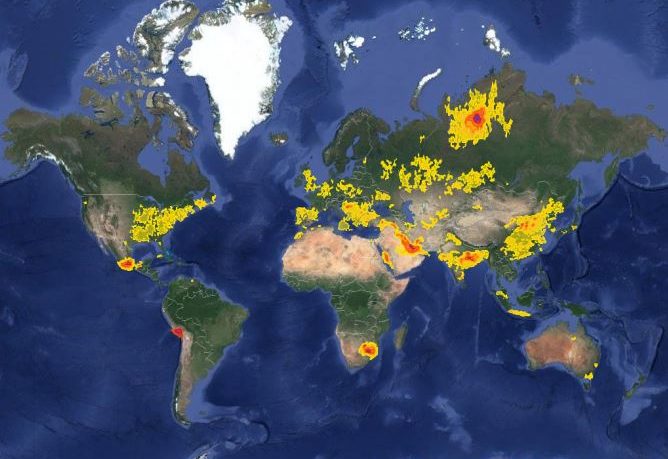- A new study commissioned by Greenpeace India using NASA satellites to track SO2 hotspots around the world reveals that South Africa’s Highveld sulphur dioxide (SO2) emissions are beaten only by the enormous nickel smelters at Norilsk in Russia.
- In third place, according to the new NASA data, is an enormous petrochemicals plant at Zargoz in Iran.
According to Greenpeace, power plants and industries which burn oil and gas are responsible for two thirds of SO2 emissions which can be linked to human activity, in the world. Oil refineries and metal smelters – like the one in Russia – are also major sources of SO2.
A previous Greenpeace study also showed that Mpumalanga has one of the world’s highest rates of nitrogen dioxide.
In November last year, GroundWork and Mpumalanga community organisation Vukani Environmental Justice Movement in Action (Vukani) launched landmark litigation demanding that government clean up the air in the Mpumalanga Highveld.
GroundWork and Vukani, represented by the Centre for Environmental Rights (CER) , claim that government has violated the Constitutional right to a healthy environment for the people living and working in the Highveld Priority Area (HPA), by failing to improve the deadly levels of air pollution in the HPA.
Mpumalanga accounts for about 83 percent of South Africa’s coal production, and Eskom owns the 12 coal-fired power plants located in the area.
More recently in May this year, GroundWork, represented by the Centre for Environmental Rights (CER), launched High Court proceedings against Environmental Affairs Minister Nomvula Mokonyane and the President of South Africa to set aside government’s plan to double the amount of the harmful pollutant sulphur dioxide (SO2) polluters are allowed to emit.
Related news: Concern over South Africa’s weak carbon tax
A recent study conducted by Lauri Myllyvirta, a lead analyst at Greenpeace Global Air Pollution Unit, shows that, over time, an estimated 3,300 premature deaths would be caused by doubling the SO2 standard, as a result of increased risk of lower respiratory infections, increased risk of stroke, and increased risk of death from diabetes – with approximately 1,000 of these premature deaths estimated in Gauteng. The studies also show profound health impacts on children, the elderly, pregnant women, and those already suffering from asthma, heart, and lung disease.
Link to full Greenpeace report on SO2 Global Hotspots here
Link to SO2 global hotspots interactive map here
Author: Bryan Groenendaal















